Natural Pest Control - Methods and Benefits
In today's world, where environmental concerns are at the forefront, natural pest control has emerged as a beacon of hope for those seeking to manage pests without resorting to harmful chemicals. This approach not only addresses the immediate problem of pest infestations but also promotes a healthier ecosystem. Imagine walking through your garden, surrounded by vibrant plants and the gentle hum of beneficial insects, knowing that you are contributing to a sustainable environment. Sounds appealing, right? That's the magic of natural pest control!
Natural pest control encompasses a variety of eco-friendly techniques aimed at reducing pest populations while preserving biodiversity. Unlike traditional pest control methods, which often rely heavily on chemical pesticides, natural alternatives focus on leveraging nature's own mechanisms to keep pests at bay. This means healthier plants, cleaner air, and a safer environment for you and your loved ones. So, what are some of the methods that fall under this umbrella? Let's dive into the fascinating world of natural pest control!
At its core, natural pest control is about working with nature rather than against it. It involves using methods that are not only effective but also sustainable. By embracing these techniques, we can create a balanced ecosystem that thrives on biodiversity. This means fewer pests, healthier plants, and a more vibrant garden. Think of it as a dance between various elements of nature, where each participant plays a crucial role in maintaining harmony.
There are several popular methods of natural pest control, each with its unique advantages. From biological control to physical barriers, these techniques offer a range of solutions for managing pest issues effectively. Here are some of the most common methods:
- Biological Control: Utilizing natural predators or parasites to keep pest populations in check.
- Physical Barriers: Employing row covers, nets, and traps to physically prevent pests from accessing plants.
- Herbal and Plant-Based Repellents: Using plants with natural pest-repelling properties to deter unwanted insects.
Each of these methods can be tailored to suit your specific gardening needs, making natural pest control a versatile and effective approach.
One of the most fascinating aspects of natural pest control is biological control. This method involves introducing natural predators or parasites that target specific pests, thus creating a self-regulating system. For instance, ladybugs and lacewings are known for their voracious appetite for aphids, which can wreak havoc on your plants. By encouraging these beneficial insects to take up residence in your garden, you can significantly reduce aphid populations without the need for chemical interventions.
Introducing beneficial insects into your garden is like inviting a team of superheroes to help you fight off the villains. These tiny allies not only control pest populations but also promote a healthier ecosystem. Consider creating a habitat for them by planting diverse flora that provides food and shelter. It's a win-win situation!
Another remarkable player in the realm of biological control is beneficial nematodes. These microscopic worms are effective against soil-dwelling pests, such as grubs and root weevils. When applied to the soil, they seek out and eliminate these pests naturally, providing a chemical-free solution to pest problems.
Sometimes, the simplest solutions are the most effective. Physical barriers such as row covers, nets, and traps can prevent pests from accessing your precious plants. These barriers act as shields, protecting your garden while allowing sunlight and rain to nourish your plants. It's like building a fortress around your garden, ensuring that only the right elements can enter.
Did you know that some plants have natural pest-repelling properties? By utilizing herbs and plants like mint and marigold, you can create a beautiful garden that also deters unwanted insects. These plants not only add visual appeal but also serve as a natural defense mechanism. Imagine sipping a refreshing mint tea while knowing that your garden is thriving without the use of harsh chemicals!
Another exciting avenue in natural pest control is the use of essential oils. Derived from various plants, these oils can be used as natural repellents. Not only do they smell wonderful, but they also effectively keep pests at bay. A few drops of peppermint or lavender oil mixed with water can create a delightful spray that protects your plants while filling the air with a pleasant aroma.
Companion planting is a strategy that involves growing specific plants together to naturally repel pests and enhance growth. For example, planting basil near tomatoes can help ward off aphids and other pests. It's like having a buddy system in your garden, where plants support each other in thriving and staying pest-free.
The advantages of embracing natural pest control methods are numerous. Not only do they reduce chemical exposure, but they also improve soil health and enhance biodiversity. By opting for these methods, you contribute to sustainable agricultural practices that benefit both the environment and your health.
Using natural pest control methods minimizes chemical runoff and pollution, promoting a healthier ecosystem. This approach protects wildlife habitats and ensures that our planet remains vibrant for future generations. It's like planting a seed of sustainability that will grow into a lush, thriving environment.
Natural pest control also reduces the risk of pesticide exposure for humans and pets. By choosing eco-friendly methods, you create a safer living environment and ensure that the food you consume is free from harmful chemicals. It's about making choices that lead to healthier lives and a cleaner planet.
- What is natural pest control? Natural pest control refers to eco-friendly methods used to manage pest populations without harmful chemicals.
- How effective is biological control? Biological control can be highly effective, as it utilizes natural predators to keep pest populations in check.
- Are there any risks associated with natural pest control? Generally, natural pest control methods are safer for humans, pets, and the environment compared to chemical alternatives.
- Can I use natural pest control in my home? Yes, many natural pest control methods can be applied indoors to manage pests without harmful chemicals.

Understanding Natural Pest Control
Natural pest control is a fascinating and essential approach to managing pest populations without the use of harmful chemicals. Imagine stepping into your garden and witnessing a vibrant ecosystem where every creature plays a role—this is the beauty of natural pest control. By employing eco-friendly techniques, we can significantly reduce the number of pests while promoting biodiversity and enhancing the health of our environment. But what does this really mean? It’s not just about keeping bugs at bay; it’s about creating a balanced ecosystem that supports all forms of life.
At its core, natural pest control focuses on working with nature rather than against it. This means utilizing methods that harness the power of natural predators, physical barriers, and plant-based solutions. Think of it as a symphony where every instrument contributes to a harmonious outcome. For instance, beneficial insects like ladybugs and lacewings don’t just coexist with pests; they actively help manage their populations. This creates a natural balance, reducing the need for chemical interventions that can harm both the environment and our health.
Moreover, natural pest control methods can be incredibly effective. Studies have shown that these techniques can lead to healthier crops and gardens, ultimately resulting in better yields. By embracing these methods, we not only protect our plants but also contribute to a sustainable future. Imagine a world where our gardens thrive without the toxic residues of pesticides—this is the promise of natural pest control.
In addition to promoting biodiversity, natural pest control methods also align with organic farming practices, which are gaining popularity among health-conscious consumers. This shift towards organic practices is not just a trend; it’s a movement towards a healthier planet. As we become more aware of the impact of chemicals on our health and the environment, the demand for natural solutions continues to grow.
So, what are some of the specific methods used in natural pest control? Here are a few key approaches:
- Biological Control: Utilizing natural predators or parasites to manage pest populations.
- Physical Barriers: Implementing row covers, nets, and traps to keep pests away from plants.
- Herbal Repellents: Using plants known for their pest-repelling properties to deter unwanted insects.
In conclusion, understanding natural pest control is crucial for anyone interested in gardening or sustainable agriculture. By choosing to implement these methods, we not only protect our plants but also foster a healthier environment. It’s a win-win situation—our gardens flourish, and we contribute to the well-being of our planet. As we delve deeper into the various methods of natural pest control, we’ll discover how each technique plays a vital role in creating a thriving ecosystem. Ready to explore more? Let’s dive into the exciting world of natural pest control methods!
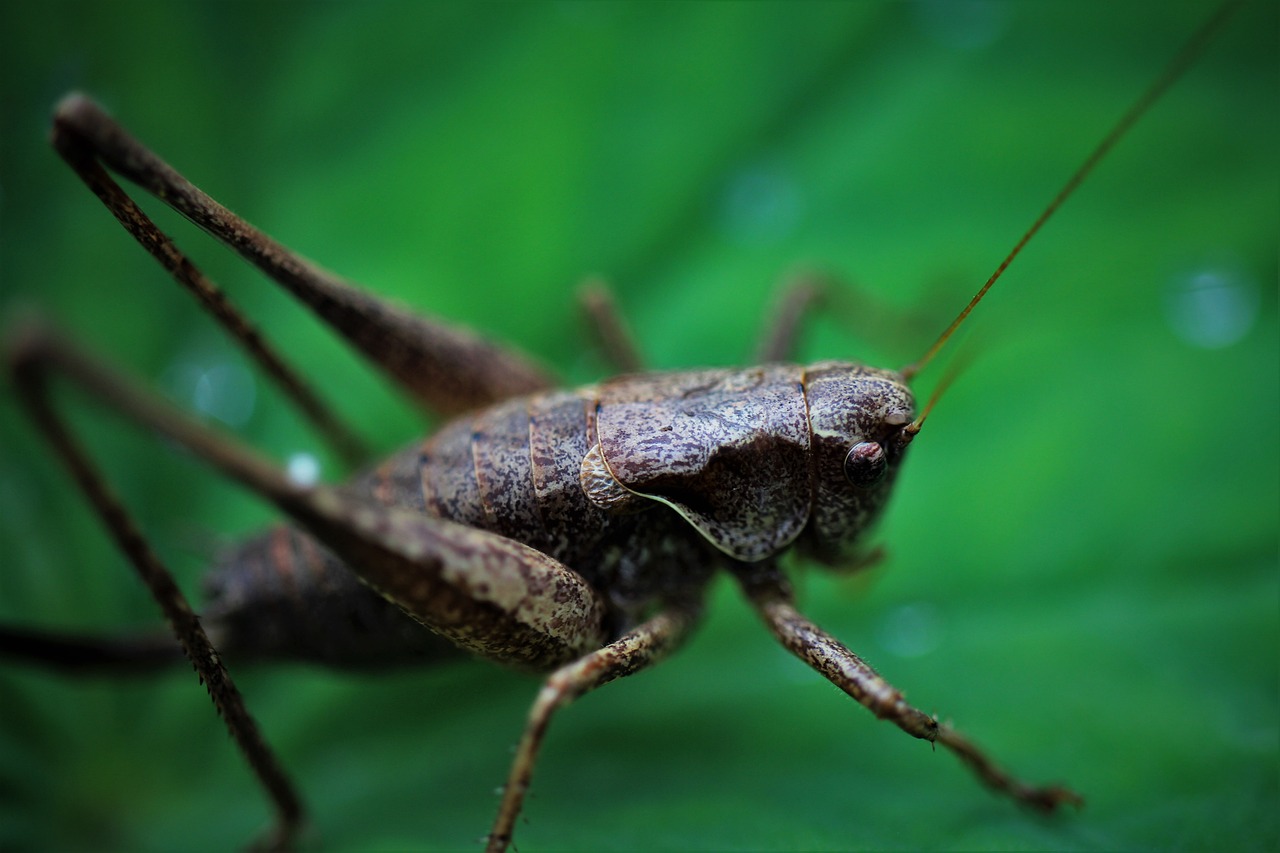
Common Natural Pest Control Methods
When it comes to managing pests in our gardens and homes, natural pest control methods have gained significant traction. These eco-friendly techniques not only help in reducing pest populations but also promote a healthier environment. Let's dive into some of the most effective methods that harness nature's own power to keep those pesky invaders at bay.
One of the most popular approaches is biological control, which utilizes natural predators or parasites to maintain pest populations at manageable levels. Imagine having tiny warriors in your garden, like ladybugs and lacewings, that feast on aphids and other harmful insects. By introducing these beneficial insects, you create a balanced ecosystem that reduces your reliance on chemical pesticides. This method not only protects your plants but also enhances biodiversity, making your garden a thriving habitat.
Another fascinating method is the use of beneficial nematodes. These microscopic worms are nature’s secret agents, targeting and eliminating soil-dwelling pests such as grubs and root weevils. They enter the bodies of these pests, releasing bacteria that cause them to die. This method is particularly effective and environmentally friendly, as it doesn’t harm beneficial insects or plants. Just think of them as tiny pest control ninjas working silently beneath the soil!
Next up are physical barriers, which provide a straightforward and chemical-free way to protect your plants. Using row covers, nets, or traps, you can effectively block pests from accessing your precious plants. For instance, a simple mesh net can keep birds and larger insects away while allowing sunlight and rain to nourish your plants. It’s like building a protective fortress around your garden, ensuring that only the right guests can enter.
In addition to these methods, there are herbal and plant-based repellents that can naturally deter unwanted insects. Plants like mint and marigold not only enhance the aesthetics of your garden but also release scents that many pests find unappealing. By strategically placing these plants around your garden, you create a natural barrier that keeps pests at bay while adding beauty to your landscape.
Essential oils derived from plants also serve as effective natural repellents. For instance, oils like peppermint, lavender, and eucalyptus can be diluted and sprayed around the garden to ward off various pests. Not only do they smell great, but they also provide a natural solution to pest problems without the harmful effects of synthetic chemicals. It’s like having a pleasant aroma in your garden while simultaneously keeping it safe from intruders!
Lastly, let’s talk about companion planting. This method involves growing specific plants together to naturally repel pests and enhance growth. For example, planting basil near tomatoes can help deter tomato hornworms, while also boosting the flavor of your tomatoes. It’s a win-win situation that promotes a healthy ecosystem in your garden.
In summary, the world of natural pest control offers a plethora of methods that not only protect your plants but also enrich your garden’s biodiversity. By embracing these techniques, you’re contributing to a healthier environment, reducing chemical exposure, and paving the way for sustainable gardening practices.
Q: How effective are natural pest control methods compared to chemical pesticides?
A: Natural pest control methods can be highly effective, especially when used consistently and in combination. They promote a balanced ecosystem, which can lead to long-term pest management without the harmful side effects associated with chemical pesticides.
Q: Are there any risks associated with using beneficial insects?
A: Generally, beneficial insects are safe to use and do not pose risks to humans or pets. However, it's essential to ensure you're introducing the right species for your specific pest problem to maintain ecological balance.Q: Can I make my own herbal repellents at home?
A: Absolutely! Many herbal repellents can be made at home using common ingredients. For example, mixing water with essential oils or steeping herbs in water can create effective sprays to deter pests.

Biological Control
Biological control is a fascinating and effective method of managing pest populations by harnessing the power of nature itself. Instead of reaching for chemical pesticides that can harm the environment and our health, this approach utilizes natural predators, parasites, or pathogens to keep pest numbers in check. Imagine a tiny army of beneficial insects swooping in to save your garden from destruction—this is the essence of biological control!
One of the most effective strategies in biological control is the introduction of beneficial insects. These insects, such as ladybugs and lacewings, are natural predators of common garden pests like aphids. By encouraging or introducing these helpful allies into your garden, you can create a balanced ecosystem where pests are managed naturally. Not only do these beneficial insects feast on the unwanted pests, but they also help pollinate your plants, contributing to a thriving garden environment.
Another remarkable player in the biological control arena is beneficial nematodes. These microscopic worms are like secret agents in the soil, targeting and eliminating soil-dwelling pests such as grubs and root weevils. When applied to the soil, nematodes invade the bodies of these pests and release bacteria that quickly kill them. This method is not only effective but also environmentally friendly, as it doesn’t disturb the soil structure or harm beneficial organisms.
To maximize the benefits of biological control, it’s essential to understand the specific pests you are dealing with and the natural enemies that can help combat them. For instance, while ladybugs are fantastic at controlling aphid populations, they may not be effective against other pests like spider mites. Therefore, a little research can go a long way in ensuring that you introduce the right beneficial species into your garden.
In addition to introducing beneficial insects and nematodes, creating a healthy habitat for these natural allies is crucial. Here are some tips to enhance your garden's ecosystem:
- Plant a variety of flowers and herbs that attract beneficial insects.
- Avoid using broad-spectrum pesticides that can harm both pests and beneficial species.
- Provide shelter and nesting sites for beneficial insects, such as insect hotels or undisturbed areas in your garden.
In conclusion, biological control is a sustainable and effective way to manage pests while promoting a healthy ecosystem. By working with nature rather than against it, you can create a flourishing garden that not only thrives but also supports biodiversity. So, next time you spot a few pesky aphids, consider inviting their natural predators to the party instead of reaching for that chemical spray!

Beneficial Insects
When it comes to managing pests in our gardens, the idea of inviting into the mix might sound counterintuitive at first. However, these tiny warriors are nature's way of keeping the balance in our ecosystems. Imagine your garden as a bustling city, where some residents—like aphids—are causing chaos, munching on your precious plants. Enter beneficial insects, the superheroes of the garden, ready to swoop in and restore order. They not only help control pest populations but also contribute to the overall health of your garden.
One of the most well-known beneficial insects is the ladybug. With their vibrant red shells and black spots, they are not just a delight to the eyes; they are voracious eaters of aphids, making them a gardener's best friend. A single ladybug can consume up to 5,000 aphids in its lifetime! Now, that’s a serious pest control strategy. Similarly, lacewings are another group of beneficial insects that feast on aphids, caterpillars, and other soft-bodied pests. Their larvae, often referred to as "aphid lions," are particularly effective in keeping pest populations in check.
But the benefits don’t stop there. Introducing these insects into your garden can lead to a more balanced ecosystem. By fostering a habitat that attracts beneficial insects, you are effectively creating a natural pest control system. You can do this by planting a variety of flowering plants that provide nectar and pollen, which are essential for their survival. Some popular choices include:
- Yarrow - attracts ladybugs and lacewings.
- Marigolds - not only repel certain pests but also attract beneficial insects.
- Fennel - attracts parasitic wasps that help control caterpillar populations.
Moreover, beneficial insects can help pollinate your plants, which is another fantastic bonus. While they are busy hunting down pests, they also contribute to the fertility of your garden. So, instead of reaching for those chemical pesticides, consider creating a welcoming environment for these tiny allies. By doing so, you not only protect your plants but also promote a healthier ecosystem in your backyard.
In summary, beneficial insects are essential players in the game of pest control. By understanding their roles and encouraging their presence, you can manage pests naturally and effectively. It's a win-win situation: a thriving garden and a balanced ecosystem, all thanks to these small but mighty creatures!
Q: How can I attract beneficial insects to my garden?
A: Plant a variety of flowers that provide nectar and pollen, such as yarrow, marigolds, and fennel. Avoid using chemical pesticides that can harm beneficial insects.
Q: Are ladybugs and lacewings easy to find?
A: Yes, you can often find them at garden centers or online. They are also naturally attracted to gardens with diverse plant life.
Q: How do beneficial insects help with pollination?
A: While hunting for pests, many beneficial insects also visit flowers for nectar, which aids in the pollination process.
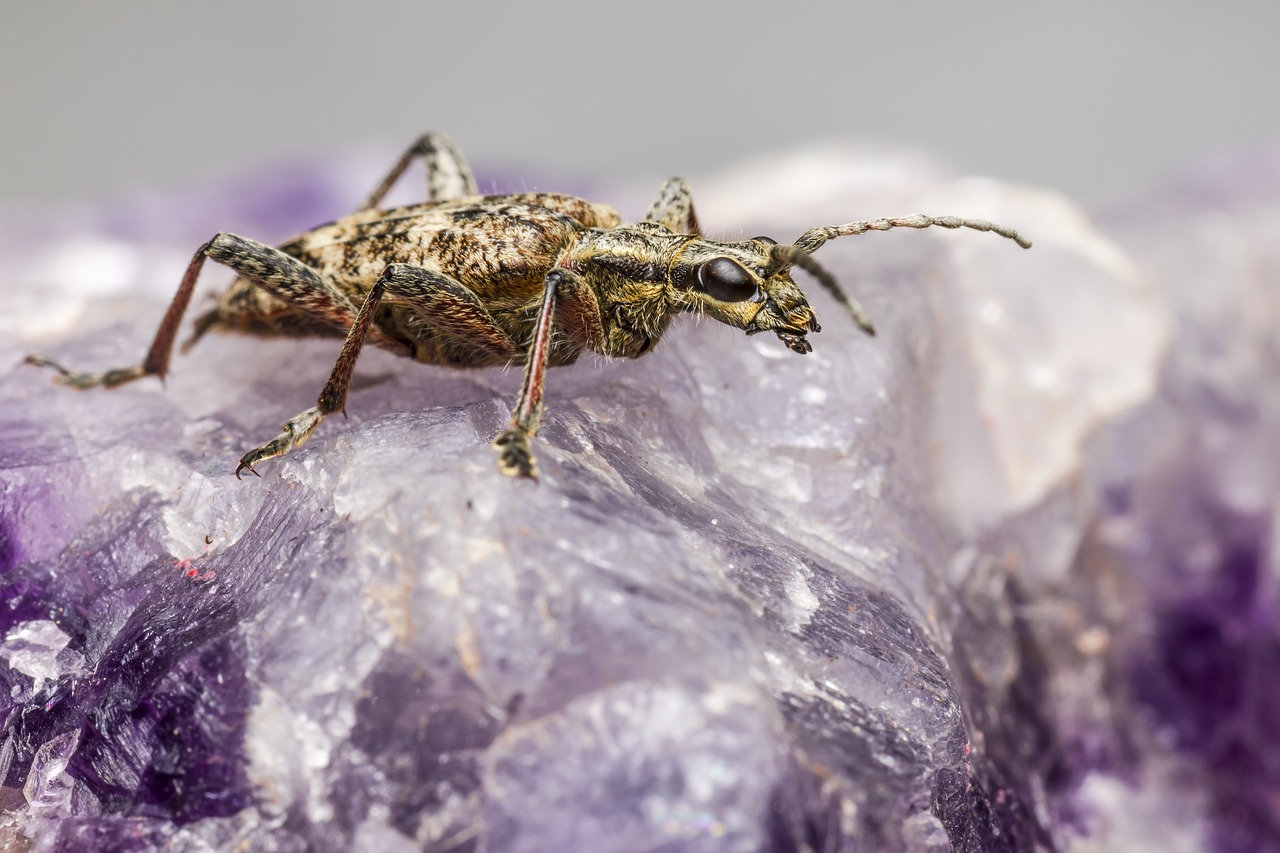
Nematodes
Nematodes, often referred to as roundworms, are fascinating microscopic organisms that play a crucial role in natural pest control. These tiny creatures, which are typically less than a millimeter in length, can be found in diverse environments, from soil to freshwater and marine ecosystems. When it comes to pest management, beneficial nematodes are a game changer. They act as natural predators to a variety of soil-dwelling pests, including grubs, root weevils, and even some types of caterpillars. By introducing nematodes into your garden or agricultural space, you can effectively target these harmful pests without resorting to chemical pesticides, which can harm beneficial insects and degrade soil health.
The way nematodes work is quite remarkable. They enter the bodies of their hosts through natural openings, such as the mouth or anus, and then release symbiotic bacteria that kill the pest within a few days. This process not only eliminates the pest but also enriches the soil as the nematodes reproduce, creating a sustainable method of pest control. This ecological approach helps maintain a balanced ecosystem, ensuring that beneficial insects and other organisms thrive alongside your plants.
One of the most appealing aspects of using nematodes is their specificity. They target specific pests while leaving beneficial organisms unharmed. For example, if you're dealing with a grub infestation in your lawn, applying nematodes will eradicate the grubs without affecting earthworms or other beneficial soil organisms. This makes them an ideal choice for organic gardening and sustainable agriculture.
Here’s a quick overview of the types of nematodes commonly used in pest control:
| Nematode Type | Pest Targeted | Application Method |
|---|---|---|
| Steinernema feltiae | Fungus gnats, root weevils | Soil drench |
| Heterorhabditis bacteriophora | Grubs, cutworms | Soil drench, spray |
| Steinernema carpocapsae | Armyworms, caterpillars | Foliar spray |
Using nematodes is not only effective but also incredibly easy. They can be purchased online or at garden centers, and they usually come in a dormant state, ready to be activated with water. Simply mix them with water, and apply them to the affected areas of your garden or lawn. It's important to apply them during the evening or on cloudy days to protect them from direct sunlight, ensuring their effectiveness.
In conclusion, nematodes offer a powerful, eco-friendly solution to pest problems in gardens and farms. They embody the essence of natural pest control by providing a method that is both effective and sustainable. By harnessing the power of these microscopic allies, you can cultivate a healthier, more balanced ecosystem while keeping your plants safe from pests.
- What are nematodes? Nematodes are microscopic roundworms that can be used as biological pest control agents to target specific soil-dwelling pests.
- How do I apply nematodes? Nematodes can be applied as a soil drench or foliar spray, depending on the type of nematode and the pest you are targeting.
- Are nematodes safe for humans and pets? Yes, beneficial nematodes are safe for humans, pets, and beneficial insects, making them an ideal choice for organic gardening.
- How long do nematodes last in the soil? Nematodes can survive in the soil for several weeks, depending on environmental conditions such as moisture and temperature.

Physical Barriers
When it comes to keeping pests at bay, are a straightforward yet highly effective method. Imagine your garden as a fortress, where you can protect your precious plants without resorting to harsh chemicals. Physical barriers act as the first line of defense against unwanted visitors, allowing you to maintain a healthy and thriving garden ecosystem. These barriers can be as simple as row covers, nets, or even traps designed specifically for certain pests. By blocking pests from reaching your plants, you can significantly reduce the chances of infestations while promoting a more sustainable approach to gardening.
One of the most common forms of physical barriers is the use of row covers. These lightweight fabrics create a protective shield over your plants, keeping insects like aphids and beetles at bay while still allowing sunlight and moisture to penetrate. Think of row covers as cozy blankets for your plants, providing warmth and protection against pests. They are particularly useful during the early stages of plant growth when young seedlings are most vulnerable.
Another effective method is using netting. Garden nets come in various sizes and mesh types, allowing you to tailor your protection based on the specific pests you're dealing with. For instance, fine mesh nets can keep out tiny insects like whiteflies, while larger nets can deter birds and larger pests. This versatility makes netting an invaluable tool in any gardener's toolkit. Additionally, nets can be reused season after season, making them a cost-effective option for long-term pest management.
Traps also play a crucial role in physical pest control. These can range from sticky traps that catch flying insects to bait traps that lure in pests like slugs and snails. By strategically placing traps around your garden, you can monitor pest populations and take action before they become a significant problem. The beauty of traps is that they not only help reduce pest numbers but also provide a visual cue of what pests are present, allowing you to adjust your strategies accordingly.
In conclusion, implementing physical barriers in your garden is a natural and effective way to manage pests without harming the environment. By using row covers, nets, and traps, you create a protective environment for your plants that fosters growth and health. Not only do these methods minimize the need for chemical interventions, but they also contribute to a more biodiverse ecosystem. So, next time you're in your garden, consider how physical barriers can help you defend your plants while keeping your gardening practices sustainable.
- What are the most effective physical barriers for pest control?
Row covers, nets, and traps are among the most effective physical barriers. They can be tailored to suit specific pests and protect your plants effectively.
- Can I reuse physical barriers year after year?
Yes! Many physical barriers, such as nets and row covers, can be reused season after season, making them a cost-effective solution for pest management.
- How do I know which pests are affecting my garden?
Using traps can help you identify which pests are present in your garden. Sticky traps and bait traps can provide visual cues about pest populations.
- Do physical barriers affect pollinators?
While some barriers like row covers can limit access for pollinators, using fine mesh or removing covers during flowering can help ensure pollination occurs.
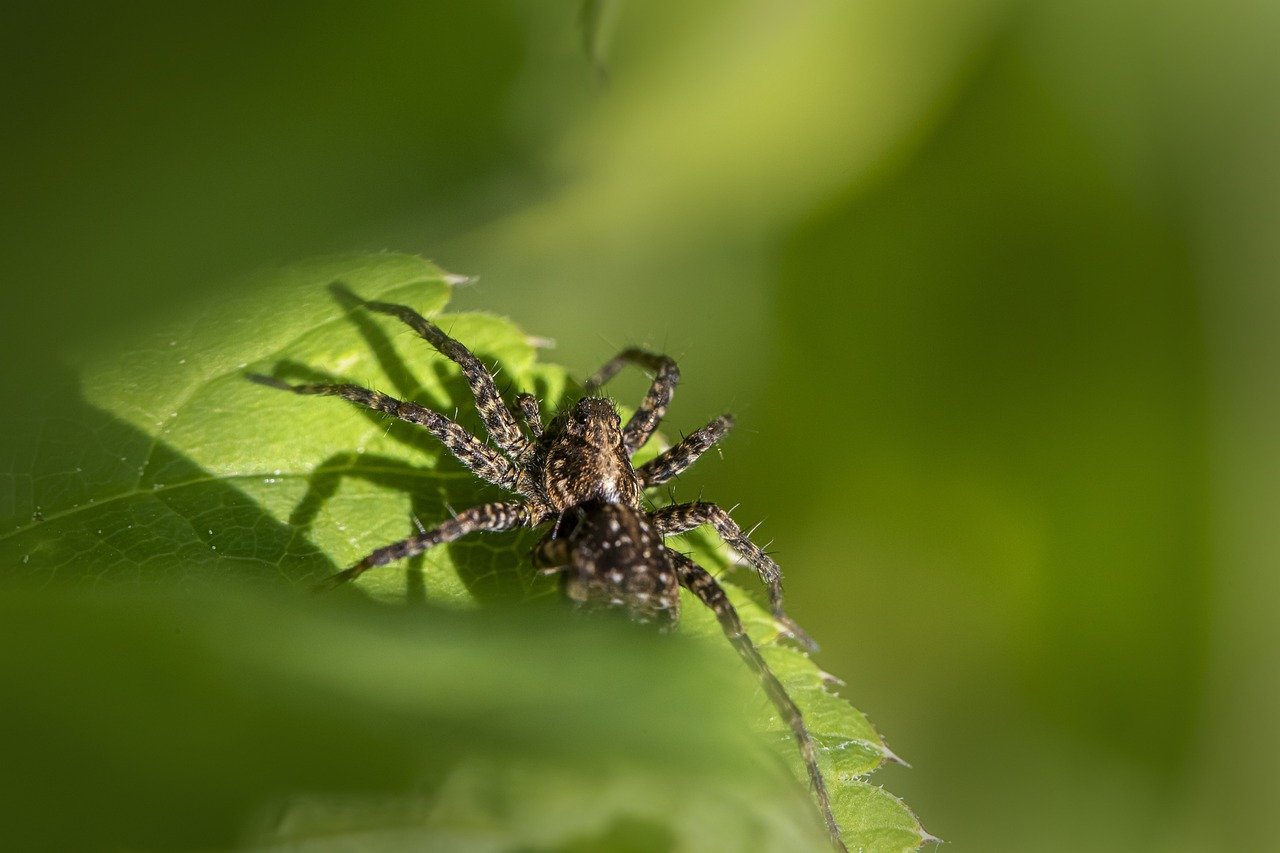
Herbal and Plant-Based Repellents
When it comes to keeping pests at bay without resorting to harsh chemicals, shine as a beacon of hope. Imagine walking through your garden, surrounded by vibrant flowers and lush greenery, all while knowing that your plants are protected by nature's own defenses. These natural repellents not only ward off unwanted insects but also enhance the beauty and aroma of your garden. Isn't that a win-win situation?
Many herbs and plants possess pest-repelling properties that can be harnessed in various ways. For instance, mint is not just a delightful addition to your tea; its strong scent can deter ants and mosquitoes. Similarly, the bright and cheerful marigold is known to repel nematodes and aphids, making it a fantastic companion plant in any garden. By incorporating these plants into your landscape, you're creating a natural barrier against pests while enjoying their beauty and fragrance.
Another effective method is using essential oils, which are derived from various plants and can be used to create potent natural repellents. For example, oils like peppermint, eucalyptus, and lavender not only smell wonderful but also serve as effective deterrents against common pests. You can mix these oils with water and a bit of soap in a spray bottle for an easy-to-use repellent that keeps your garden safe. Just imagine spritzing your plants with a refreshing blend of essential oils while knowing you're safeguarding your green space without harming the environment.
Companion planting is another fascinating aspect of using herbal and plant-based repellents. This method involves strategically placing certain plants together to naturally repel pests and promote healthy growth. For instance, planting basil near tomatoes can help ward off tomato hornworms, while garlic can deter aphids when planted alongside roses. The beauty of this approach lies in its simplicity and effectiveness, allowing you to cultivate a thriving garden ecosystem.
In summary, the use of herbal and plant-based repellents is not only effective but also environmentally friendly. By incorporating these natural solutions into your pest control strategy, you can enjoy a healthier garden that thrives without the negative impacts associated with chemical pesticides. So, the next time you think about pest control, consider turning to nature's arsenal of plants and herbs. Your garden—and the planet—will thank you!
- What are some common herbal repellents? Common herbal repellents include mint, marigold, basil, and garlic, each offering unique pest-repelling properties.
- How do I use essential oils for pest control? Mix a few drops of essential oil with water and a small amount of soap in a spray bottle, then apply it to your plants as needed.
- What is companion planting? Companion planting is the practice of growing specific plants together to enhance growth and naturally repel pests.
- Are herbal repellents safe for pets and children? Yes, most herbal repellents are safe for use around pets and children, but it's always good to check specific plant safety.

Essential Oils
Essential oils are not just for aromatherapy; they are powerful allies in the battle against pests! Derived from various plants, these concentrated liquids are packed with natural properties that can effectively repel unwanted insects while adding a delightful fragrance to your home and garden. Imagine walking through your garden and being greeted by the refreshing scent of mint or lavender, all while knowing that these plants are working hard to keep pests at bay. Isn’t that a win-win?
Using essential oils for pest control is as easy as pie. You can create your own natural repellent by blending a few drops of essential oil with water and a mild soap in a spray bottle. Some of the most effective essential oils for this purpose include:
- Peppermint Oil: This oil is a powerful deterrent for ants, spiders, and even mice. Its strong scent confuses pests, making it hard for them to find their way.
- Lavender Oil: Not only does it smell wonderful, but lavender oil is also effective against fleas, moths, and mosquitoes. Plus, it can help you relax after a long day!
- Tea Tree Oil: Known for its antiseptic properties, tea tree oil can repel a variety of insects. It’s particularly effective against mosquitoes, which can ruin any outdoor gathering.
- Eucalyptus Oil: The fresh scent of eucalyptus is not only refreshing for humans but also repels insects like mosquitoes and flies.
When using essential oils, it’s important to remember that they are potent substances. A little goes a long way! Always dilute them properly before applying them to your skin or using them in your home. Additionally, some essential oils can be harmful to pets, so it's wise to research and ensure their safety before using them. You don’t want to inadvertently create a hazardous environment for your furry friends!
Moreover, essential oils can be a part of a broader strategy for pest management. For instance, you can combine their use with other natural pest control methods such as companion planting or the introduction of beneficial insects. This holistic approach not only enhances the effectiveness of your pest control efforts but also promotes a healthier ecosystem in your garden.
In summary, essential oils offer an effective, natural alternative to chemical pesticides. They are versatile, easy to use, and can enhance your living space with their lovely scents. So, why not give them a try? You might just find that your garden flourishes while keeping those pesky pests at bay!
Q1: Are essential oils safe for pets?
A: Some essential oils can be harmful to pets, so it’s essential to research each oil and consult with a veterinarian if you have concerns.
Q2: How do I make a pest repellent spray with essential oils?
A: Mix 10-15 drops of your chosen essential oil with water and a few drops of mild soap in a spray bottle. Shake well before use!
Q3: Can I use essential oils indoors?
A: Yes, essential oils can be used indoors to repel pests, but ensure proper ventilation and keep them away from pets and small children.
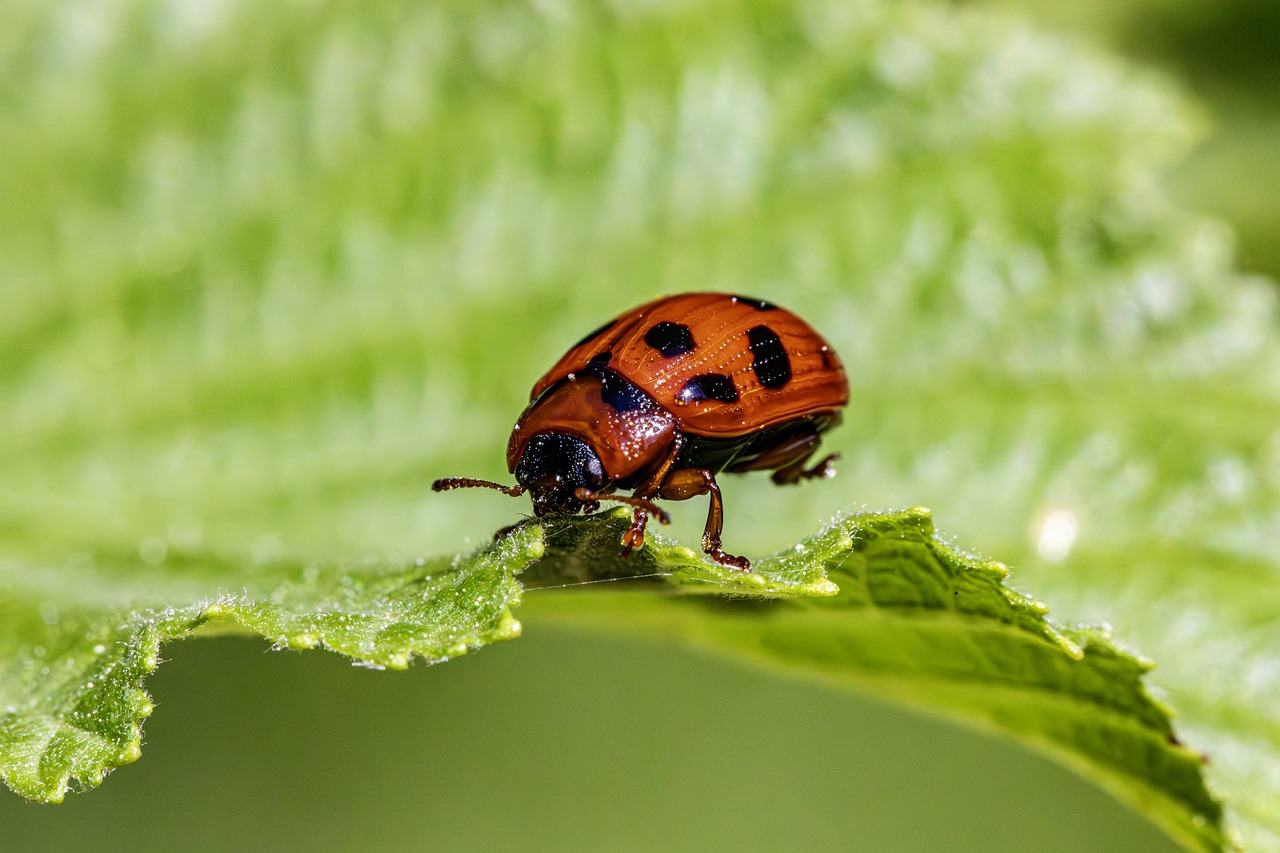
Companion Planting
Companion planting is a fascinating gardening technique that involves growing different plants in close proximity to one another to create a mutually beneficial environment. This method is not just about aesthetics; it’s a clever way to enhance growth, deter pests, and even improve the flavor of your crops. Imagine your garden as a bustling neighborhood, where each plant plays a unique role—some are the protectors, while others are the nurturers. By choosing the right companions, you can create a thriving ecosystem right in your backyard!
One of the most appealing aspects of companion planting is its simplicity and effectiveness. For example, planting marigolds alongside your vegetables can repel harmful nematodes and aphids, acting as a natural pest deterrent. Similarly, basil is known to enhance the flavor of tomatoes while also repelling flies and mosquitoes. It’s like having a buddy system for your plants! When you pair plants that complement each other, you not only improve your garden's health but also make it more resilient against pests and diseases.
In addition to pest control, companion planting can improve soil health and boost nutrient availability. For instance, legumes like beans can fix nitrogen in the soil, enriching it for neighboring plants that may require more nutrients. This natural fertilization process reduces the need for chemical fertilizers, promoting a healthier environment. Think of it as a community garden where everyone contributes to the well-being of the whole!
Here are some classic companion planting pairings that you might find helpful:
- Tomatoes and Basil: Enhance flavor and repel pests.
- Carrots and Onions: The onion's scent deters carrot flies.
- Corn, Beans, and Squash (The Three Sisters): A traditional Native American planting trio that supports each other’s growth.
Implementing companion planting in your garden can be a fun and rewarding experience. It encourages you to think critically about your plants’ relationships and how they can work together for a common goal. Plus, it adds an element of surprise—just like discovering a hidden gem in a well-tended garden! Remember, the key is to observe and adapt; every garden is unique, and what works for one may not work for another. So, grab your gardening gloves and start experimenting with companion planting for a more vibrant and productive garden!
Q: What is companion planting?
A: Companion planting is the practice of growing different plants together to enhance growth, deter pests, and improve crop yields through beneficial relationships.
Q: How can companion planting help with pest control?
A: Certain plants can repel pests or attract beneficial insects that prey on harmful pests, reducing the need for chemical pesticides.
Q: Are there any plants that should not be planted together?
A: Yes, some plants can hinder each other’s growth. For example, planting cabbage near strawberries can stunt their growth.
Q: Can I use companion planting in containers?
A: Absolutely! Companion planting can be effectively applied in container gardens, allowing you to maximize space and create a healthy growing environment.
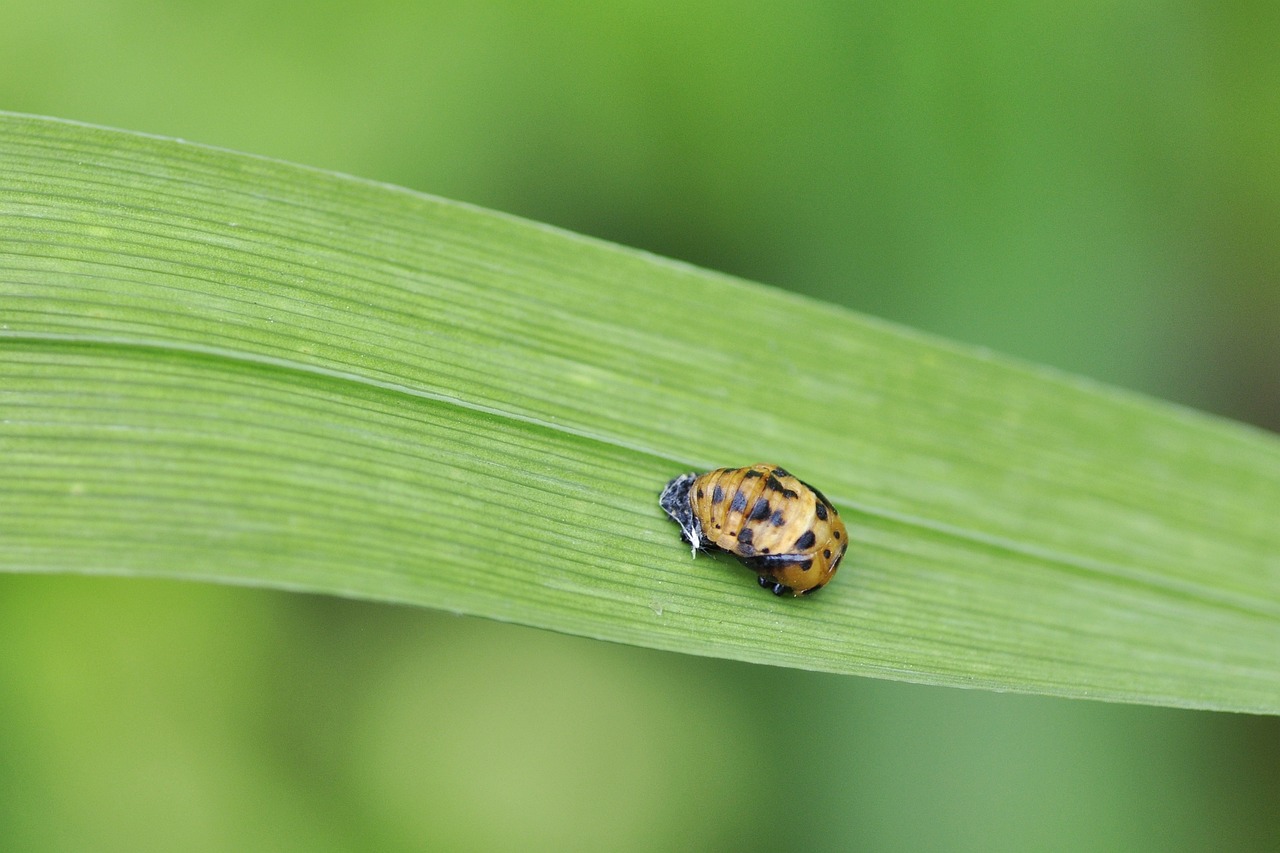
Benefits of Natural Pest Control
When it comes to pest management, the benefits of natural pest control methods are not just a whisper in the wind; they’re a clarion call for a healthier, more sustainable approach to gardening and agriculture. Imagine a world where you can enjoy your garden without the looming threat of chemical exposure. Natural pest control offers a multitude of advantages that not only protect your plants but also safeguard your health and the environment.
One of the most significant benefits is the reduction of chemical exposure. Traditional pesticides can leave harmful residues on fruits and vegetables, posing risks to human health and the environment. By opting for natural methods, you minimize these risks, creating a safer space for your family and pets. This is particularly vital for those with sensitivities or allergies to chemicals. Just think about it: would you rather eat food treated with harsh chemicals or enjoy the peace of mind that comes from consuming organically grown produce?
Natural pest control also plays a crucial role in enhancing soil health. Many chemical pesticides can disrupt the delicate balance of soil ecosystems, killing beneficial microorganisms that are essential for nutrient cycling and plant health. In contrast, natural methods often promote biodiversity, allowing for a thriving community of organisms that contribute to soil fertility. Healthy soil leads to robust plants, which in turn can better withstand pest pressures. It’s like nurturing a good friendship; the more you invest in it, the stronger it becomes!
Moreover, employing these methods contributes significantly to biodiversity. By fostering a diverse ecosystem, you create a natural balance that can help control pest populations. For example, attracting beneficial insects such as ladybugs and lacewings can lead to a natural reduction in aphid numbers. This not only helps your garden thrive but also supports the local wildlife, creating a harmonious environment where all creatures can coexist. It’s a win-win situation!
Let’s not overlook the environmental impact of natural pest control. Using chemical pesticides often results in runoff that can pollute water sources and harm aquatic life. Natural methods, on the other hand, tend to be more sustainable, reducing the risk of contamination and promoting a healthier ecosystem. It’s akin to choosing a bicycle over a car; one option is much more eco-friendly and reduces your carbon footprint.
In addition to environmental benefits, there are also health benefits associated with natural pest control. By reducing the use of harmful chemicals, you lower the risk of pesticide exposure not just for yourself, but for your entire household. This is especially important for children and pets who are often more vulnerable to the effects of toxins. Imagine the relief of knowing that your garden is a safe haven, free from the dangers of synthetic chemicals!
In summary, the benefits of natural pest control are numerous and profound. They encompass reduced chemical exposure, improved soil health, enhanced biodiversity, and a positive environmental impact. By making the switch to natural methods, you’re not just protecting your garden; you’re contributing to a healthier planet. So, why not take the plunge and embrace these eco-friendly practices? Your garden, your health, and the environment will thank you!
- What are some effective natural pest control methods? Common methods include biological control, using beneficial insects, physical barriers, and herbal repellents.
- Are natural pest control methods safe for pets and children? Yes, natural pest control methods are generally safer than chemical alternatives, reducing the risk of exposure to harmful substances.
- How can I attract beneficial insects to my garden? Planting a variety of flowers and herbs can attract beneficial insects like ladybugs and lacewings, which help control pest populations.
- Do natural pest control methods work as effectively as chemical pesticides? While they may not provide immediate results, natural methods contribute to long-term pest management and ecosystem health.

Environmental Impact
When it comes to pest control, the methods we choose can significantly affect our environment. Natural pest control methods are not just a trend; they are a necessity for promoting a healthier ecosystem. By opting for these eco-friendly approaches, we can drastically reduce the amount of harmful chemicals that seep into our soil and waterways. This not only protects our immediate surroundings but also contributes to the overall health of our planet.
One of the most profound impacts of using natural pest control is the reduction of chemical runoff. Traditional pesticides often wash away during rains, entering streams and rivers, which can lead to devastating effects on aquatic life. In contrast, natural methods like biological control or physical barriers prevent this issue. They maintain the integrity of our water systems and help in preserving biodiversity.
Moreover, natural pest control practices encourage a more balanced ecosystem. For example, by introducing beneficial insects such as ladybugs, we not only target unwanted pests but also support a food web that sustains various species. This creates a thriving environment where plants, animals, and microorganisms can coexist harmoniously. Here’s how natural pest control positively impacts the environment:
- Minimizes Chemical Pollution: Reduces the amount of synthetic pesticides released into the environment.
- Enhances Biodiversity: Supports a variety of species, promoting ecological balance.
- Improves Soil Health: Natural methods contribute to healthier soil by avoiding chemical degradation.
- Protects Wildlife: Reduces harm to non-target species, including beneficial insects and animals.
In addition to these benefits, natural pest control methods can lead to healthier agricultural practices. Farmers who adopt these techniques often notice an improvement in their crop yields over time. This is largely due to the enhanced soil health and reduced pest pressure, which allows plants to thrive without the stress caused by chemical exposure. Not only does this create a more sustainable farming model, but it also provides consumers with healthier food options free from harmful residues.
Ultimately, the environmental impact of natural pest control extends beyond immediate benefits. It fosters a culture of sustainability, encouraging communities to think critically about their choices and the long-term effects on the planet. By embracing these methods, we are not only protecting our surroundings today but also ensuring a healthier environment for future generations. So, the next time you face a pest problem, consider the broader implications of your choices. Wouldn't you prefer a thriving ecosystem over a quick chemical fix?
Q1: What are natural pest control methods?
A1: Natural pest control methods include eco-friendly techniques such as biological control, traps, and organic repellents that manage pest populations without harmful chemicals.
Q2: Are natural pest control methods effective?
A2: Yes, many natural pest control methods are highly effective and can provide long-term solutions to pest problems while minimizing ecological impact.
Q3: How do beneficial insects help with pest control?
A3: Beneficial insects, such as ladybugs and lacewings, prey on common pests like aphids, helping to keep their populations in check naturally.
Q4: What is companion planting?
A4: Companion planting involves growing specific plants together that naturally repel pests, enhance growth, and improve overall garden health.
Q5: Are there any health benefits to using natural pest control?
A5: Yes, using natural pest control reduces the risk of pesticide exposure for humans and pets, leading to healthier living environments and safer food sources.
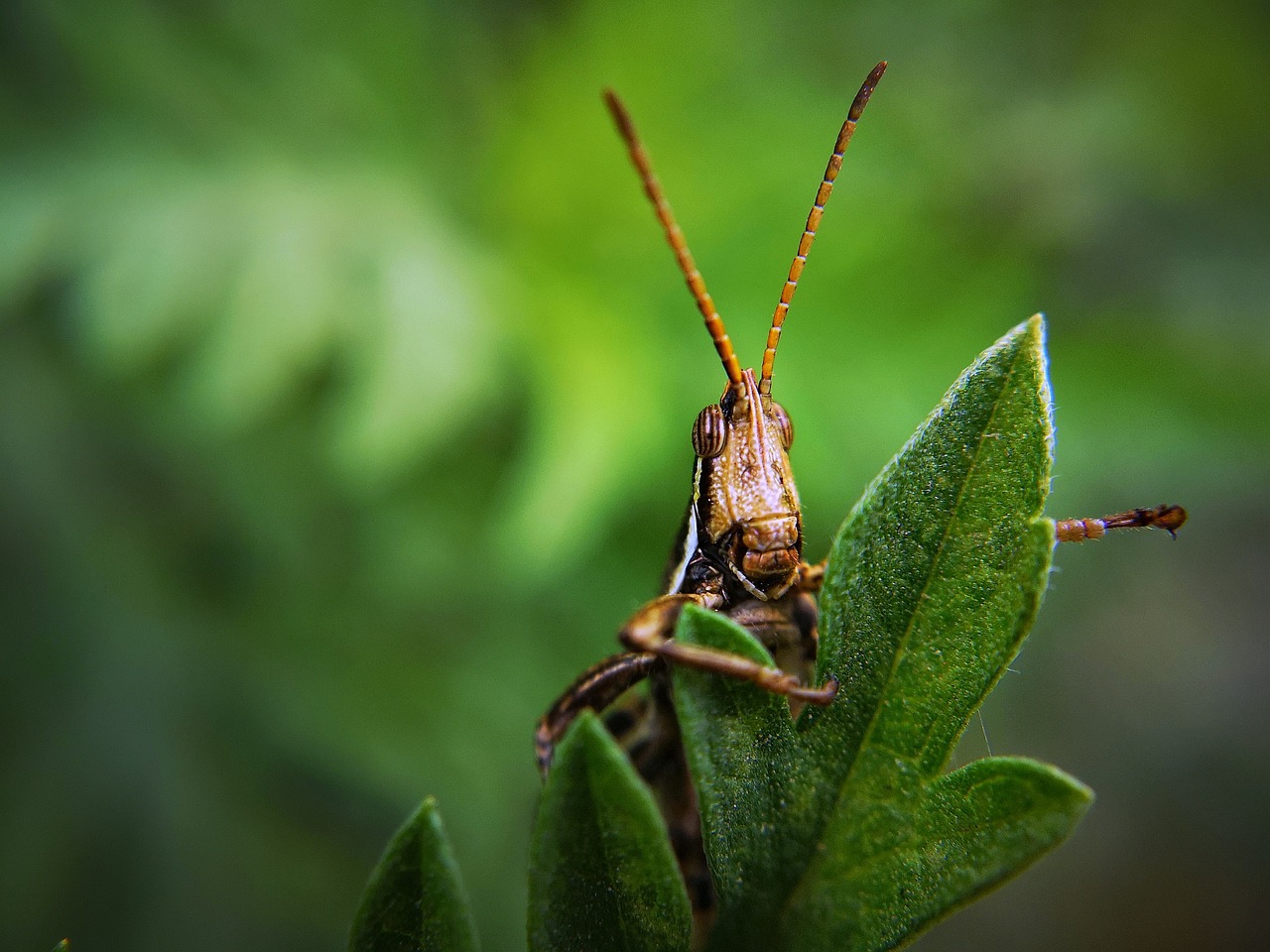
Health Benefits
When it comes to pest control, the health benefits of opting for natural methods are nothing short of remarkable. Firstly, traditional chemical pesticides can leave harmful residues on fruits and vegetables, which can pose serious health risks for humans and pets. By choosing natural pest control methods, you are significantly reducing the risk of pesticide exposure in your home and garden. Imagine biting into a juicy apple, knowing that it has been treated with nothing but nature's best defenses! This peace of mind is invaluable.
Moreover, natural pest control practices often promote healthier soil and plant life, which in turn leads to more nutritious produce. Healthy plants are better equipped to fend off pests naturally, reducing the need for any chemical interventions. This creates a cycle of health that benefits not only the plants but also the people who consume them. Think of it as a protective shield that not only keeps pests at bay but also enhances the vitality of your food.
Another significant advantage is the reduction of allergens and irritants in your environment. Many synthetic pesticides can trigger allergic reactions or respiratory issues, especially in sensitive individuals. By utilizing natural alternatives, you can create a safer living space that is free from these harsh chemicals. For instance, using essential oils not only deters pests but also fills your home with delightful aromas, making it a more pleasant place to be.
Additionally, natural pest control methods can have a positive impact on the local ecosystem. By avoiding chemical treatments, you help protect beneficial insects, birds, and other wildlife that contribute to a balanced ecosystem. This biodiversity is crucial for maintaining healthy environments, which ultimately benefits human health. After all, a thriving ecosystem is a sign of a healthy planet!
In summary, the health benefits of natural pest control are extensive, ranging from reduced chemical exposure to improved soil health and a safer living environment. By embracing these eco-friendly practices, you not only protect your health but also contribute to a sustainable future. So, why not make the switch? Your body, your family, and the planet will thank you!
- What are some effective natural pest control methods?
Some popular methods include biological control using beneficial insects, physical barriers like row covers, and herbal repellents.
- Are natural pest control methods safe for pets and children?
Yes! Natural methods generally pose less risk to pets and children compared to chemical pesticides.
- How can I start using natural pest control in my garden?
You can begin by introducing beneficial insects, planting pest-repelling herbs, and setting up physical barriers to protect your plants.
Frequently Asked Questions
- What is natural pest control?
Natural pest control refers to eco-friendly methods that manage pest populations without the use of harmful chemicals. It promotes biodiversity and is beneficial for the environment, making it a sustainable choice for pest management.
- How effective are natural pest control methods?
Natural pest control methods can be highly effective when used correctly. Techniques such as biological control, traps, and organic repellents have shown success in managing pests while minimizing ecological impact.
- What are some common natural pest control methods?
Some popular methods include biological control using beneficial insects, physical barriers like nets and row covers, and herbal repellents derived from plants. Each method offers a unique way to tackle pest issues without chemicals.
- What are beneficial insects?
Beneficial insects, such as ladybugs and lacewings, are natural predators of common garden pests like aphids. Introducing them into your garden can help maintain a balanced ecosystem and reduce pest populations naturally.
- Can essential oils be used for pest control?
Yes! Essential oils extracted from plants can serve as effective natural repellents. They not only help keep pests away but also add a pleasant aroma to your surroundings.
- What is companion planting?
Companion planting is the practice of growing specific plants together to naturally repel pests and enhance growth. This method can lead to healthier plants and a more productive garden.
- What are the environmental benefits of natural pest control?
Natural pest control methods help reduce chemical runoff and pollution, which protects wildlife habitats and promotes a healthier ecosystem. This approach contributes to sustainable agricultural practices.
- Are there health benefits to using natural pest control?
Absolutely! By reducing the use of chemical pesticides, natural pest control lowers the risk of pesticide exposure for humans and pets, leading to a healthier living environment and safer food sources.



















